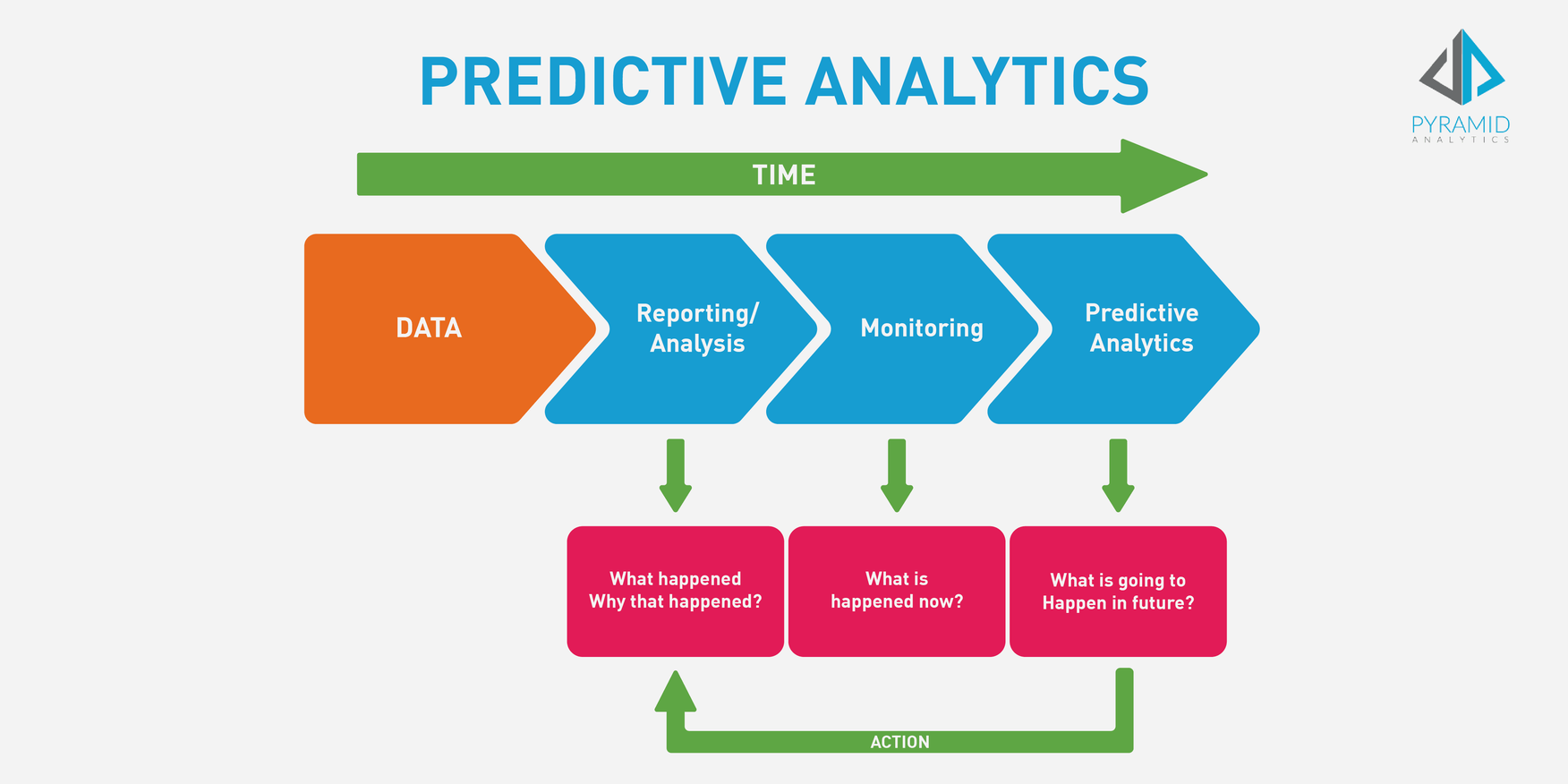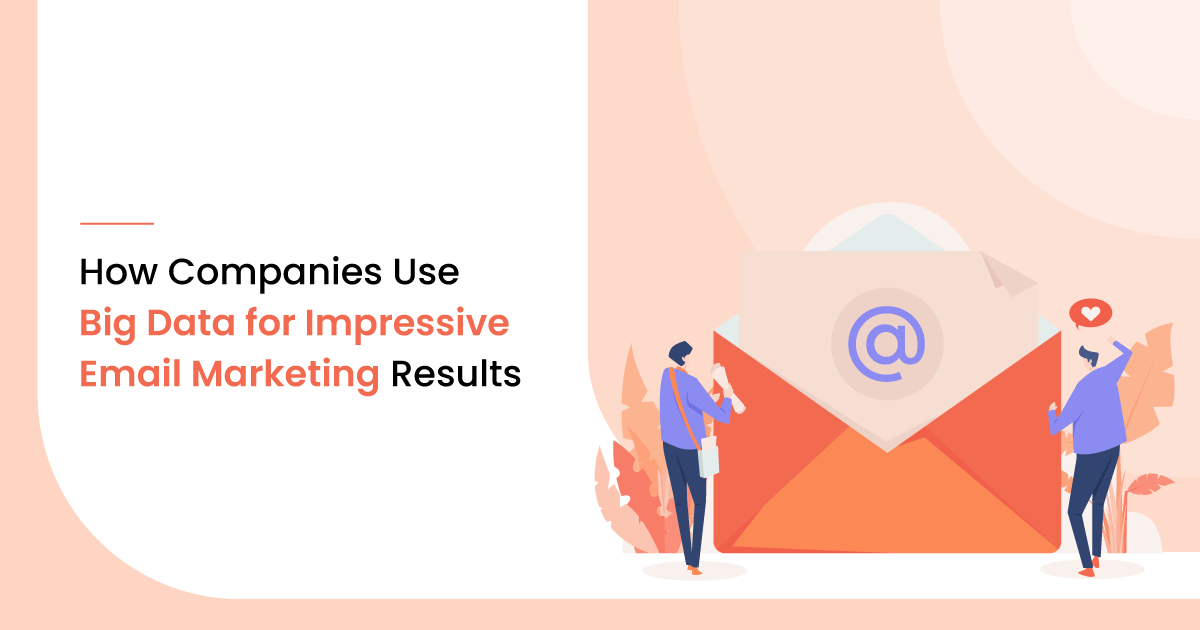Over the years, email marketing has become a go-to for businesses. Every single day, more than 290 billion emails are sent and by 2023 this figure is expected to reach 347 billion.
- Global email users amounted to 3.9 billion users and the figure is expected to grow to 4.3 billion users in 2023.
- Email marketing can be one of the best ways for marketers to generate ROI as it delivers the highest ROI at a rate of 49%.
- Companies are using big data to make the best of email marketing and gain a strategic advantage in the competitive market.
- To make the best out of big data, companies need to first analyses and collect relevant data.
- This data can then be utilized for email personalization, optimizing subject line, predictive analysis, automation, and revenue attribution to generate impressive email marketing results.
Email marketing has become a key to any marketing strategy. It is best for online marketers’ email marketing. Email marketing is the best channel as it generates the highest ROI.
Both B2B and B2C marketers struggle to generate qualified leads. However, in a typical environment, the process of lead generation and sales is anything but quick and straightforward. Marketers are always expected to deliver ROI-generating marketing programs.
Hence, they need to have the best channels that produce leads at their disposal. In 2019, email marketing generated the highest ROI:
- Email marketing is the top marketing channel that delivers lead at 49% of the ROI rate.
- Search generates the second-highest leads with a 46% ROI rate.
- Live events produce leads to the ROI rate of 42%.

According to Statista, in 2019, global email users amounted to 3.9 billion users and the figure is expected to grow to 4.3 billion users in 2023.

5 Different Methods Marketers for Impressive Email Marketing Results
Now that we have understood how email marketing can be one of the best sources to generate ROI of your marketing campaign. Let’s understand 5 different ways marketers can leverage big data for impressive email marketing results:
1. Personalization
Digital marketing provides an option for marketers to personalize their email marketing rather than blasting out identical emails to the entire subscriber list. Markets can select the segment and then craft a highly personalized email.
The reason behind the success of personalized email marketing strategy is that it reflects an individual customer’s needs. If it has the potential to grab a customer’s attention and resonate it increases their engagement with the message.
In a survey by Hubspot, 38% of the survey said that they signed up for a company’s newsletter to receive relevant information.

For instance, if an online shoe store needs to create a good email marketing campaign for man in their 20’s who likes to run cross-country. They should be targeting their likes and dislikes by learning about them from their browsing habits such as which brands and style of shoes they looked at. They cannot target a 20 something will something that would please a retired woman who enjoys power walking. With the help of Big Data, the business can send highly targeted emails that reflect the interest of each buyer.
Today, one of the most popular tactics is to generate limited period offers based on each customer’s buying habits, personal interests, and their browsing history.
2. Optimizing Subject Line
When a person receives an email the first thing that grabs his/her attention is the subject lines. If the subject line of a message fails to catches their eye then the mail will end up in their bin or worst spam. The ultimate goal of increasing the odds that that user will open your email and read it is to create a catchy subject line.
Marketers can utilize AI data analysis that can help them determine which characteristics result in higher open rates. They can analyze several factors such as word count, keyword placement, and character length. They can also work on details such as using the customer’s name within the subject line.
To capitalize on the subject line, 60% of email subject lines use sentence-case capitalization, 34% use title-case capitalization, and only 6% use all lowercase email subject lines.

Split testing can help marketers figure out what makes subscribers open their emails at the highest rate. The three benefits of split testing are high open rates, boost in click-through rates, and gain a better understanding of customer’s wants.

3. Predictive Analysis
Big data is very powerful only if used in the right way. By collecting and analyzing the right data, marketers can gain vital insight into consumer’s current buying behaviors. These insights can then be used to predict a customer’s future purchases.

Big data can help marketers understand patterns in customer behavior and hence predict their next move.
For instance, it can give insight into products that are purchased together or the segment of customers who are likely to make these purchases. Hence, when a new customer buys an item and also fits particular segment marketers can send them highly tailored email showcasing related accessories. This helps increase post-purchase revenue.
Let’s see how Amazon uses predictive analytics to sell more to its existing customers. If a customer had been browsed its site looking for a new camera but didn’t make a purchase yet. Amazon sends an email that presents them several similar products that they can choose from.
4. Automation
Automation has become an integral part of email marketing. The most popular type of automation is behavior triggered emails. Such an email can help marketers streamline the email marketing journey of customers until purchase.
What are the different types of triggered emails and when to use them?

By utilizing big data, marketers can choose an appropriate action for a different trigger. Based on the results, the business can then fine-tune their emails to determine marketing tactics work that was most helpful.
5. Revenue attribution
Big data helps companies track which marketing campaigns are generating revenue and which are not. However, with this information companies can also leverage running a cause-and-effect campaign.
That’s because big data can collect real-time information which can allow them to measure the effectiveness of any marketing efforts immediately.
Businesses make use of this potential by learning about consumer interests when they are browsing through their online store and then use this information to change their marketing tactics.

Wrapping it Up
Big data is a gold mine of information. Major tech and e-commerce companies use these methods to make the best out of big data. Ignoring such as treasure will mean missing out on opportunities to improve your ROI.
Companies should use it to gain a strategic advantage in the increasingly competitive market and improve customer relationships. More and more marketers are trying to capitalize on the lucrative opportunities offered by big data-driven email marketing to create more engagement with customers.
However, the most important lesson remains that the value of email marketing strategy is depended on the correct use of data. Companies that can create campaigns that are highly relevant to customers can generate real brand engagement.
Need Any Technology Assistance? Call Pursho @ 0731-6725516







